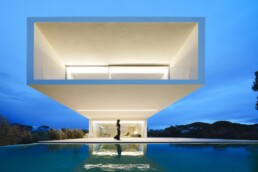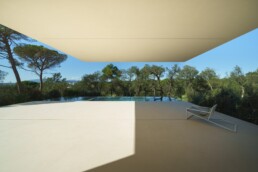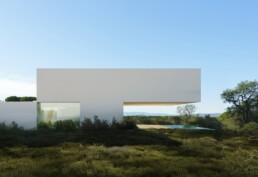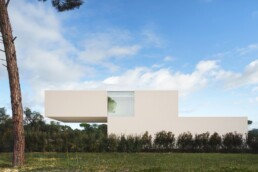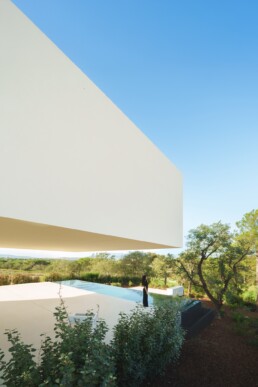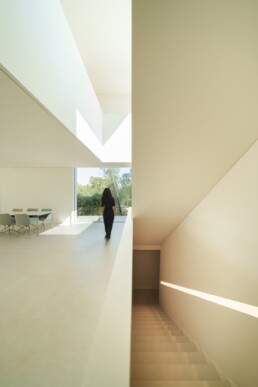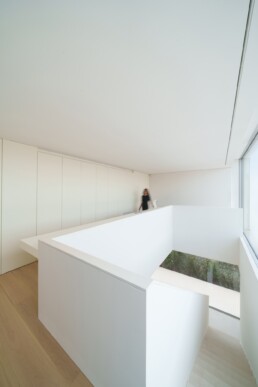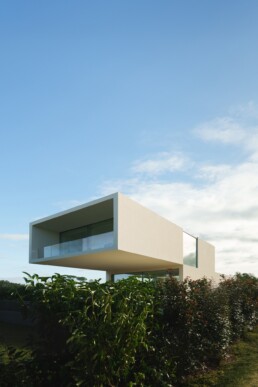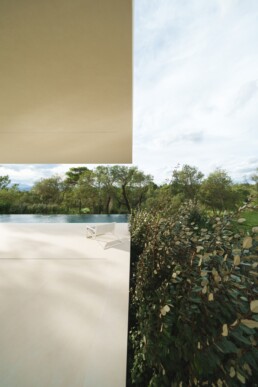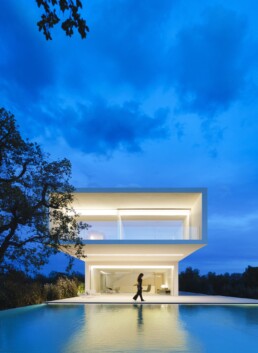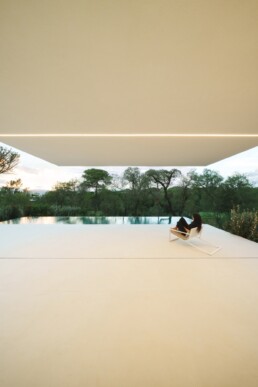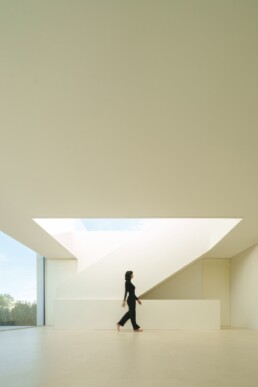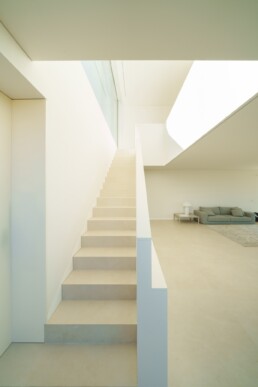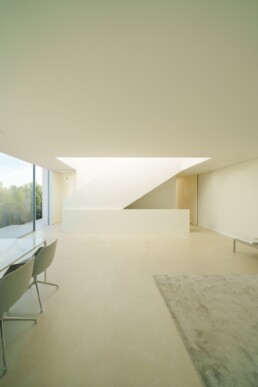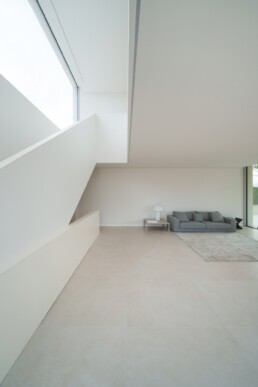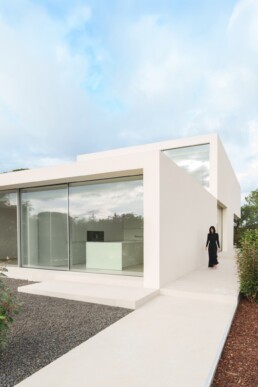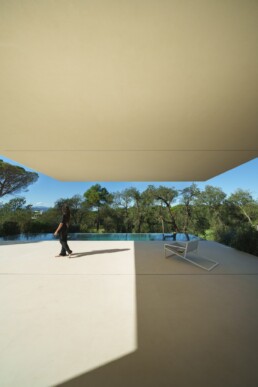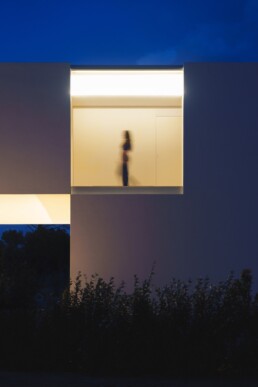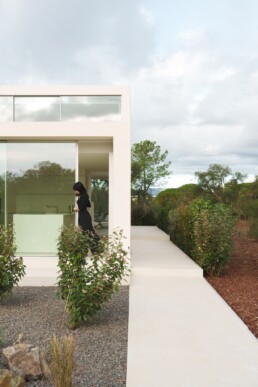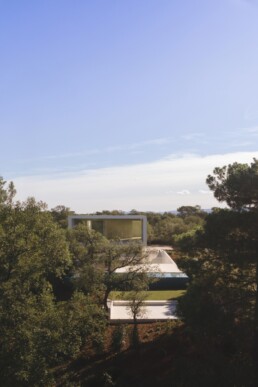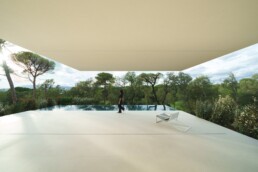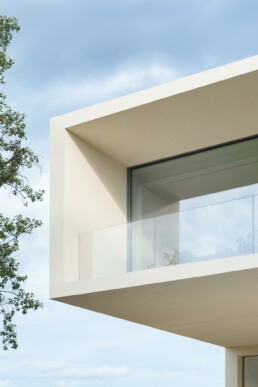The geometry of the house emerges as a direct response to its setting: a defined program, predominant views, and a plot with elongated proportions that determine the longitudinal placement of the volume.
The upper volume, slightly offset from the main body, houses the night area and creates a large covered terrace. This move not only provides shade and climatic comfort, but also frames the views without the need for intermediate structural elements, intensifying the connection with the surroundings. The volumes feature only two additional openings: one on the ground floor, marking the entrance and indicating the beginning of the vertical circulation; and another on the upper floor, bringing southern light into the main bedroom. Both are located at strategic points, giving the façade a dynamic reading.
The project is located in Caldes de Malavella, in the province of Girona, within an exceptional natural setting next to the Camiral golf club. The plot, narrow and elongated, favors a precise and directed placement. It is the first plot to be developed in an urban area that is currently being consolidated.The ground floor accommodates the day area. The living room is oriented toward the most open landscape, while the kitchen and one bedroom are positioned to the east. The upper floor houses two bedrooms that open to the natural surroundings, as well as a study facing the entrance.
This space, which could be seen as mere circulation, takes on a defined role here, enhancing spatial quality and supporting programmatic continuity. In the basement, which is partially underground, are the garage, technical areas, and a multipurpose space. This level adds mass to the whole and contributes to the structural balance of the cantilevered volume. The communication core articulates the three floors. The handrail, conceived as a continuous line, reinforces the spatial unity of the route. The staircase, lit from above by a north-facing opening, creates a vertical void that connects all levels both visually and functionally.
On the upper floor, this void extends into the study, becoming the heart of the project. The perimeter circulation that surrounds it allows for full and efficient use of the floor plan. We have always been fascinated by Arthur Schopenhauer’s idea of architecture as “frozen music.” We like to think of this project as a movement on pause, a form sculpted by its context, like Andreu Alfaro’s sculpture Figure About to Fly: eternally static and yet in perpetual motion.



